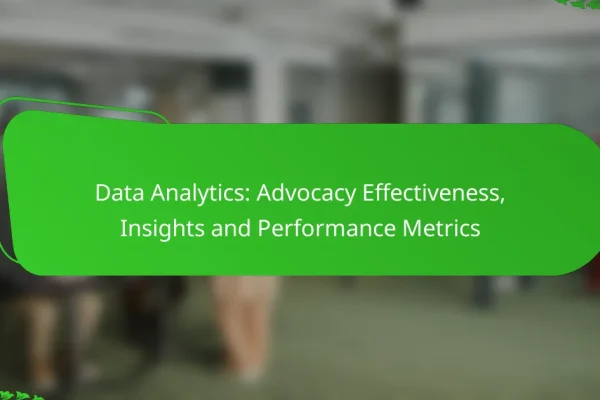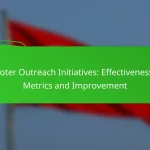What are the best practices for impact measurement and reporting?
The best practices for impact measurement and reporting involve systematic approaches that ensure accurate data collection, effective communication, and alignment with organizational objectives. By implementing these practices, organizations can enhance their accountability and improve decision-making processes.
Utilizing key performance indicators (KPIs)
Key performance indicators (KPIs) are essential metrics that help organizations assess their impact effectively. Selecting relevant KPIs involves identifying specific, measurable outcomes that align with the organization’s goals. For example, a nonprofit might track the number of beneficiaries served or the percentage increase in community engagement.
When establishing KPIs, ensure they are SMART: Specific, Measurable, Achievable, Relevant, and Time-bound. This clarity helps in setting realistic targets and facilitates better tracking of progress over time.
Implementing data visualization tools
Data visualization tools transform complex data into easily understandable visual formats, such as charts and graphs. These tools enhance reporting by making trends and patterns more accessible to stakeholders. Popular options include Tableau, Power BI, and Google Data Studio.
When choosing a data visualization tool, consider user-friendliness and the ability to integrate with existing data sources. Effective visualizations can significantly improve stakeholder engagement and comprehension of impact reports.
Conducting stakeholder engagement
Engaging stakeholders is crucial for gathering diverse perspectives and ensuring that impact measurement reflects the needs of all parties involved. Regularly solicit feedback from stakeholders, including beneficiaries, funders, and community members, to refine measurement practices.
Consider organizing focus groups or surveys to capture stakeholder insights. This engagement not only improves the quality of data collected but also fosters trust and transparency within the organization.
Regularly updating reports
Regular updates to impact reports are vital for maintaining relevance and accuracy. Establish a consistent reporting schedule, such as quarterly or bi-annually, to keep stakeholders informed of progress and challenges. This practice helps in identifying trends and making timely adjustments to strategies.
Ensure that reports are concise and focused on key findings. Highlight significant changes in KPIs and provide context for any deviations from expected outcomes to maintain clarity and accountability.
Aligning with organizational goals
Impact measurement should always align with the broader goals of the organization. This alignment ensures that the metrics being tracked are relevant and contribute to strategic objectives. For instance, if an organization aims to improve educational outcomes, its impact measures should directly relate to student performance and engagement.
Regularly review and adjust impact measurement frameworks to reflect any changes in organizational goals or external conditions. This adaptability helps maintain focus and ensures that resources are directed toward achieving meaningful outcomes.
How to choose an impact measurement framework?
Choosing an impact measurement framework involves selecting a method that aligns with your organization’s goals and the specific outcomes you wish to assess. Consider factors such as the complexity of your programs, available resources, and the stakeholders involved.
Evaluating the Theory of Change model
The Theory of Change model outlines the pathway from activities to desired outcomes, helping organizations clarify their goals and assumptions. It involves mapping out the steps necessary to achieve impact and identifying indicators for measuring progress.
When evaluating this model, ensure that your assumptions are realistic and supported by evidence. Engage stakeholders in the development process to enhance buy-in and relevance. A clear visual representation can also aid in communicating your impact strategy.
Considering the Logical Framework Approach
The Logical Framework Approach (Logframe) provides a structured way to plan, monitor, and evaluate projects. It typically includes four key components: objectives, outputs, activities, and indicators, allowing for a clear alignment of resources and expected results.
When using a Logframe, focus on developing SMART (Specific, Measurable, Achievable, Relevant, Time-bound) indicators. This approach can help in tracking progress and making necessary adjustments throughout the project lifecycle. However, be aware that it may require significant upfront planning and stakeholder engagement.
Assessing the Social Return on Investment (SROI)
Social Return on Investment (SROI) measures the social, environmental, and economic value created by an organization relative to the investment made. This framework helps quantify impact in monetary terms, making it easier to communicate value to stakeholders.
To assess SROI, gather data on inputs, outputs, and outcomes, and apply a valuation method to translate social benefits into financial terms. Keep in mind that SROI calculations can be complex and may require expertise in both financial analysis and social impact assessment. Aim for transparency in your assumptions and methodologies to enhance credibility.
What tools are available for impact measurement?
Several tools can effectively facilitate impact measurement, helping organizations track and report their outcomes. Popular options include Salesforce, Tableau, and Google Analytics, each offering unique functionalities suited for different aspects of impact assessment.
Utilizing Salesforce for tracking
Salesforce is a powerful customer relationship management (CRM) platform that can be tailored for impact tracking. It allows organizations to manage data related to beneficiaries, projects, and outcomes in one centralized location.
To effectively use Salesforce for impact measurement, set up custom fields and reports that align with your specific goals. Regularly update data to ensure accuracy and consider integrating with other tools for a more comprehensive view of your impact.
Using Tableau for reporting
Tableau is a data visualization tool that enables organizations to create interactive and shareable dashboards. It transforms complex data into visually appealing graphics, making it easier to communicate impact to stakeholders.
When using Tableau, focus on key performance indicators (KPIs) that reflect your impact objectives. Utilize filters and parameters to allow users to explore data dynamically, and ensure your visualizations are clear and straightforward to interpret.
Implementing Google Analytics for data
Google Analytics is primarily known for website tracking but can also be leveraged for measuring impact through user engagement metrics. It provides insights into how users interact with your online resources, which can be crucial for assessing outreach effectiveness.
To implement Google Analytics for impact measurement, set up goals that align with your desired outcomes, such as downloads, sign-ups, or donations. Regularly review reports to identify trends and areas for improvement, and adjust your strategies accordingly to enhance your impact.
How to report impact effectively?
Effective impact reporting involves clear communication of outcomes and metrics that demonstrate the value of initiatives. Focus on aligning your reports with stakeholder interests and using data to support your claims.
Creating concise executive summaries
Executive summaries should distill the essence of your impact report into a brief format, typically one page or less. Highlight key findings, metrics, and recommendations to ensure busy stakeholders grasp the main points quickly.
Use bullet points or short paragraphs to present information clearly. Aim for clarity and brevity, avoiding jargon that may confuse readers unfamiliar with the details.
Incorporating visual data representations
Visual data representations, such as charts and graphs, can enhance understanding and retention of information. Use visuals to illustrate trends, comparisons, or significant changes over time, making complex data more accessible.
Choose the right type of visual for your data; for example, bar charts for comparisons and line graphs for trends. Ensure visuals are labeled clearly and include a brief explanation to contextualize the data.
Tailoring reports for different audiences
Different stakeholders may require varying levels of detail and focus in impact reports. Tailor your content to meet the needs of each audience, whether they are funders, board members, or community members.
For funders, emphasize financial metrics and return on investment. For community members, focus on qualitative impacts and personal stories. Consider creating multiple versions of the report to suit these diverse needs.
What are the common challenges in impact measurement?
Impact measurement often faces several challenges that can hinder accurate assessment. Key issues include difficulties in data collection and the need for clearly defined metrics to evaluate outcomes effectively.
Data collection difficulties
Collecting reliable data is a major hurdle in impact measurement. Organizations may struggle with access to necessary information, especially in regions with limited infrastructure or resources. Additionally, data quality can vary significantly, making it hard to draw meaningful conclusions.
To overcome these challenges, consider using a mix of quantitative and qualitative data sources. Surveys, interviews, and administrative records can provide a more comprehensive view. Establishing partnerships with local organizations can also enhance data collection efforts.
Defining clear metrics
Defining clear metrics is essential for effective impact measurement. Without specific, measurable indicators, it becomes difficult to assess progress or success. Organizations should focus on aligning metrics with their goals and the needs of stakeholders.
When developing metrics, prioritize simplicity and relevance. Use the SMART criteria—Specific, Measurable, Achievable, Relevant, Time-bound—to guide the process. Regularly review and adjust these metrics to ensure they remain aligned with evolving objectives and contexts.






